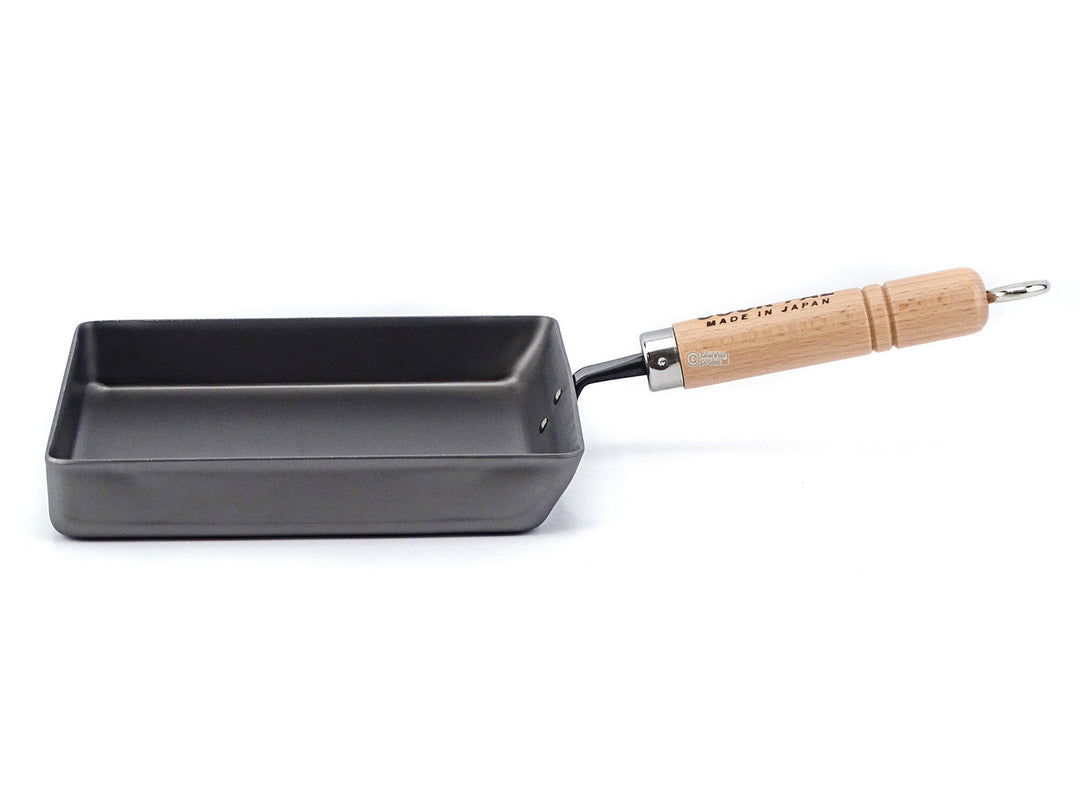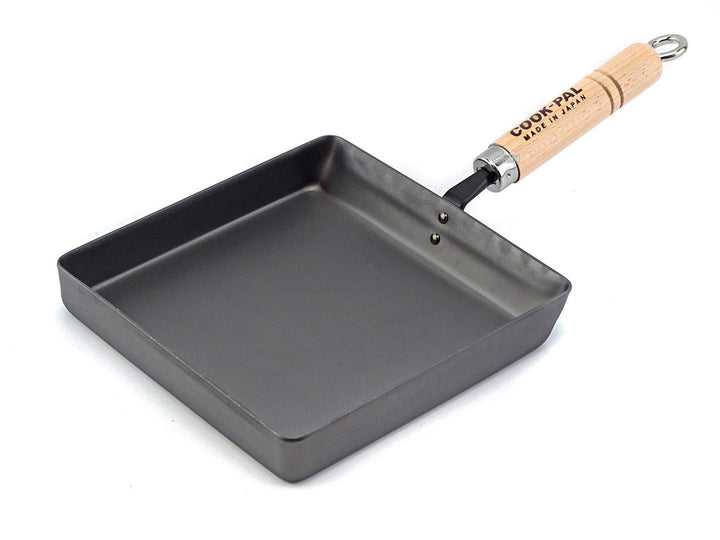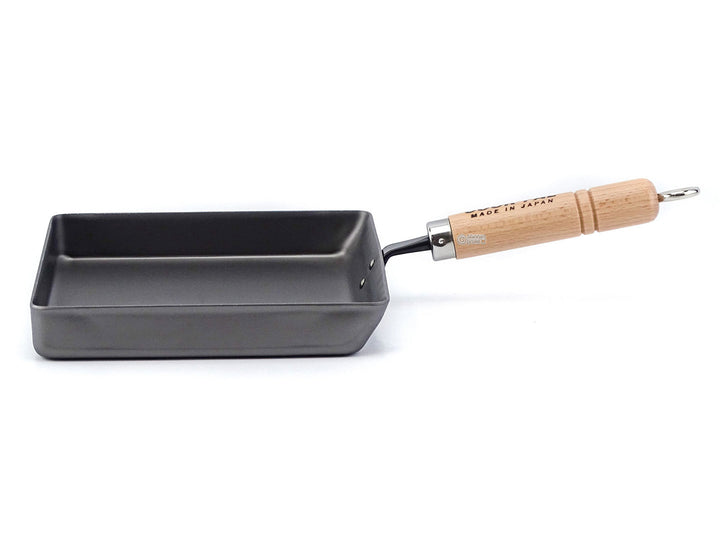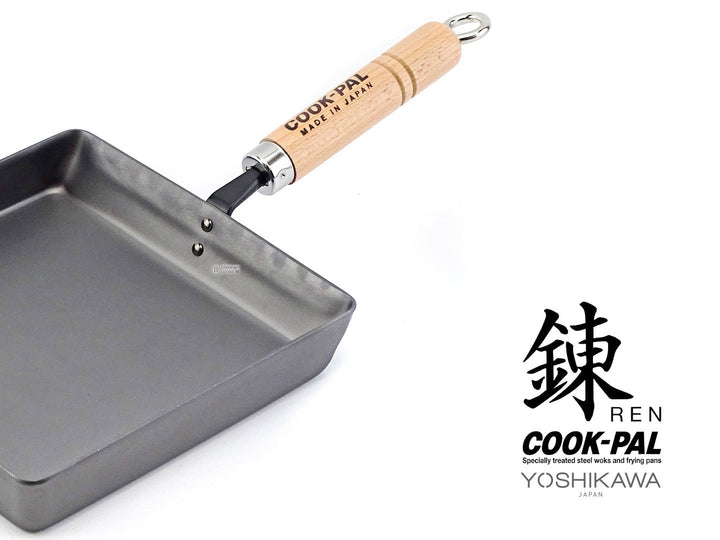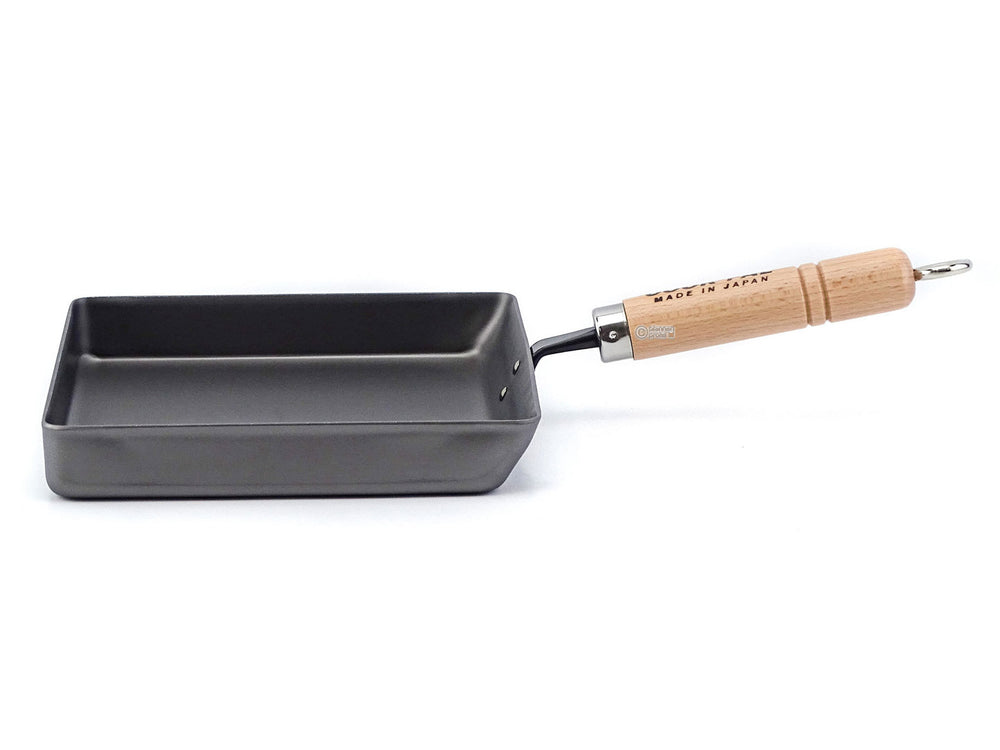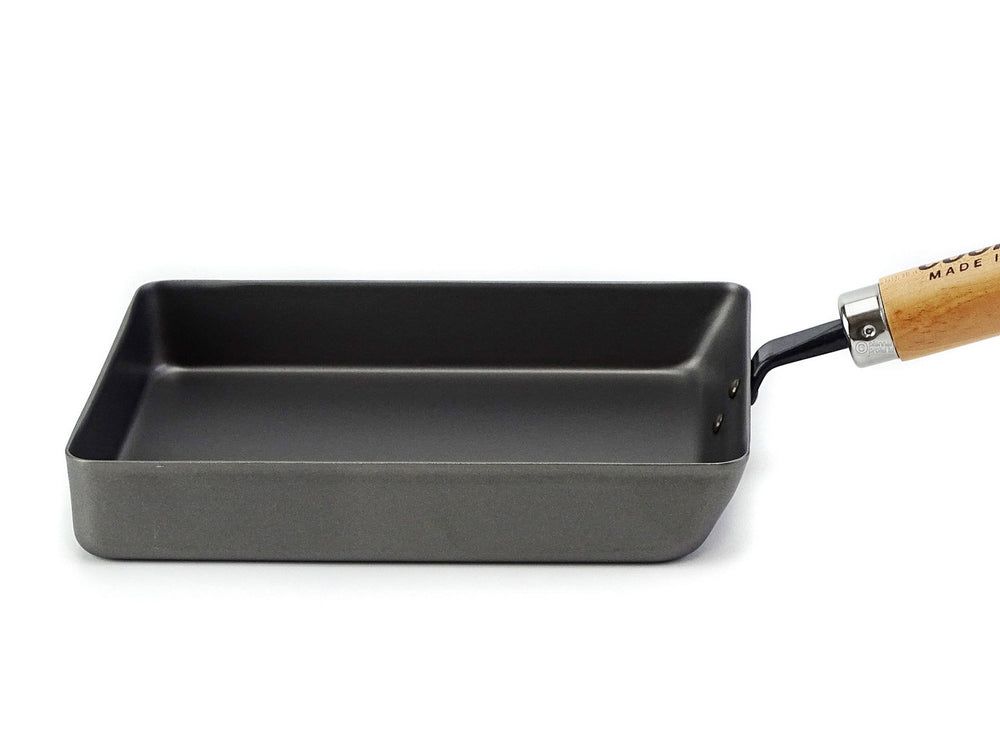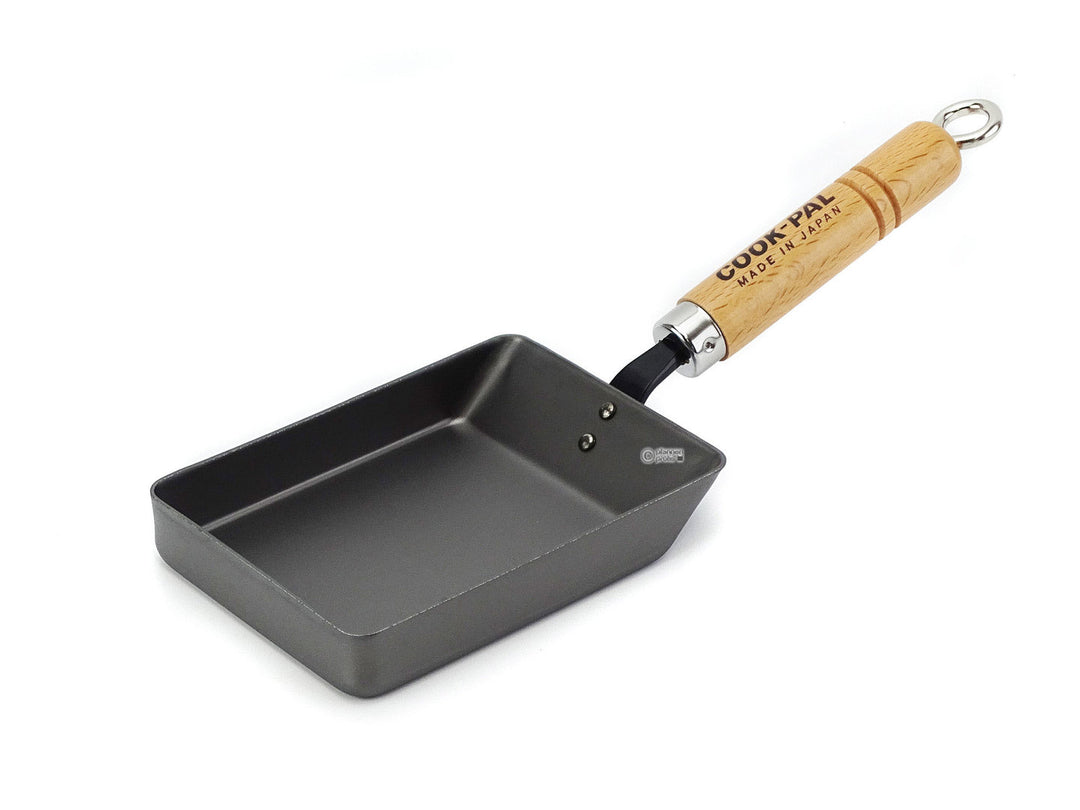Large Japanese egg pan made of iron, without seasoning.
The pans of the COOK-PAL series of the Japanese manufacturer YOSHIKAWA are an outstanding cookware. The advantages of YOSHIKAWA pans at a glance:
Lighter than cast iron pans
YOSHIKAWA iron pans made of carbon steel are more than 50% lighter than conventional cast iron pans. This makes it much easier to work with the pan and is easier on the wrists. At the same time, the lightweight YOSHIKAWA pan heats up much faster than a heavy cast iron pan.
No seasoning
YOSHIKAWA pans do not need to be seasoned. In a special high-temperature process originally developed for the automotive industry, YOSHIKAWA pans are given a dark, extremely hard oxide layer. This layer absorbs oil excellently and thus ensures the best frying properties right from the start.
No rust
YOSHIKAWA pans are also very well protected against corrosion by the aforementioned oxide layer and will not rust if used properly.
No coatings
YOSHIKAWA pans are completely free of artificial coatings of any kind. As a result, these pans are exceptionally durable and even the use of metallic kitchen utensils poses no problem.
- A high quality product from YOSHIKAWA - 100% made in Japan.
- Light and handy omelet pan made of carbon steel, square, material thickness approx. 2 mm.
- Special heat treatment for better frying properties and against corrosion.
- No seasoning necessary*.
- Heat-insulating wooden handle.
- Upper inner length approx. 18 x 18 cm.
- Height approx. 3 cm.
- Length with handle approx. 36 cm.
- Base dimensions (footprint) approx. 17 x 16 cm.
- Weight approx. 0.8 kg.
- Suitable for all types of stoves, including induction**.
PfannenProfis application tips:
* For optimal frying results, this pan should be briefly conditioned with oil before first use and later before each subsequent use. You can see how easy it is to do the initial and routine oil conditioning in the videos; you can also easily find detailed instructions in the enclosed instructions for use. Note: The dark oxide layer is NOT a non-stick coating!
** When using this pan on an induction cooktop, please be careful NEVER to heat the pan immediately over high heat. ALWAYS preheat the pan slowly at a very low power setting and only then gradually increase the power to allow the material time to distribute the induced heat and expand reasonably evenly. NEVER use the power/booster level. For further instructions, simply refer to the enclosed instructions for use.
Understanding the information on the size / diameter, height and capacity of cookware:
1) The most important information: diameter = upper inner diameter

The diameter is the most important indication of the size of pots and pans. The measurement is taken at the top inside , i.e. on the inside of the pan/pot rim; hence the designation upper inner diameter, which you will find in our item descriptions. A 28 cm pan has a diameter of 28 cm from one inner edge to the other inner edge. This measurement method is an international standard and authoritative, unless expressly stated otherwise in the item description.

For square pans (e.g. many grill pans) and roasters, the size is given as the product of two lengths. Here you measure again at the top inside, at the longest point, which is usually in the middle. For example, many grill pans have a size of 28 x 28 cm.

Fish pans and roasters often have an oval shape. As shown above with the square pans, the longest internal dimension is given here. Such a 38 cm fish pan has an inner length of 38 cm on its longest side. At right angles to this is the short side of eg 24 cm. As a result, the pan would be declared as 38 x 24 cm.
2) Bottom diameter = contact surface

When we talk about base diameter, we mean the diameter of the contact surface, i.e. the surface with which the pan, pot or roaster stands on the stove. Not meant is the frying surface! The information about the base diameter can be helpful when it comes to choosing a suitable cooking surface for the cookware. The size of the cooker and the diameter of the base of the cookware should match to a certain extent in order to avoid damage to the cookware and to ensure that the cookware functions as well as possible.
ATTENTION, induction-suitable aluminum cookware:
Please note that cookware made of aluminum / cast aluminum for induction cooking usually has a stainless steel disc on the base, the diameter of which is often smaller than that of the base (marked in blue in the picture). Where this applies, you will find the corresponding information in our item descriptions.
3) Height of pots and pans

Unless expressly stated otherwise, the indication of the height of a cookware describes the outer edge height, from the top edge of the cookware perpendicularly to the contact surface, without taking lids, handles etc. into account.
The inner height (i.e. from the frying surface up to the edge) can be determined approximately by subtracting the base thickness from the height.
4) Capacity of a cookware

When it comes to capacity, there are often misunderstandings: the capacity of a cookware indicates how much the container can hold at most. That always means filling up to the brim! This is international standard. The filling quantity that can be used when cooking is always less than the capacity.
Please note that in the case of pressure cookers, for safety reasons, the filling quantity permitted in pressure cooking is significantly lower than the capacity of the pot.
 DE: 4.90 €
DE: 4.90 €
 EU: from 14.90 €
EU: from 14.90 €
 UK: from £18.40, delivered duty paid
UK: from £18.40, delivered duty paid
 CH: from 19.90 € (duties & charges may apply with / after delivery)
CH: from 19.90 € (duties & charges may apply with / after delivery)
 USA & CND: from 35.70 € (duties & fees may apply with / after delivery)
USA & CND: from 35.70 € (duties & fees may apply with / after delivery)
More details about shipping costs here.





